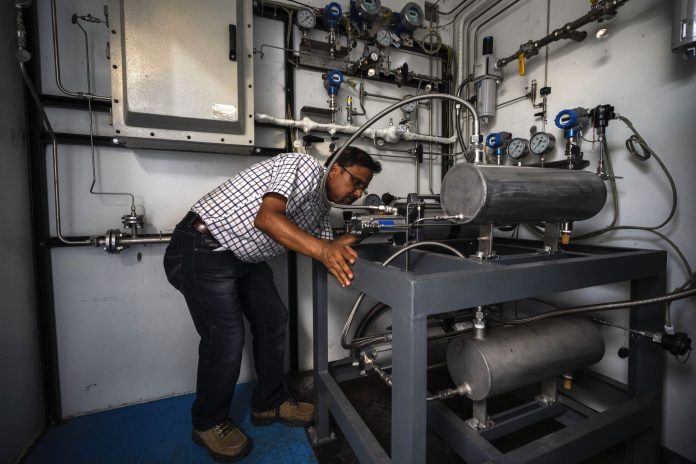
Hydrogen has always been part of the oilfield, but its potency as an alternative fuel and its low-carbon appeal have given it a heightened prominence that is increasing by the month.
ExxonMobil, Chevron and other companies are building plants to process the gas and the Texas Oil & Gas and Permian Basin Petroleum associations say hydrogen is an inevitable part of the world’s energy future.
An ExxonMobil spokesman said from Houston that his corporation is already one of the largest hydrogen companies in the world, producing more than a million metric tons per year for use in its refining and chemical operations.
“We are progressing plans to build the world’s largest low-carbon hydrogen plant in Baytown,” the spokesman said.
Among Chevron’s multitude of hydrogen-related projects is working with the Burlington Northern Santa Fe railroad company and Caterpillar to power locomotives with hydrogen fuel cells.
The San Ramon, Calif.-based Chevron is also part of a group of leading energy companies and organizations called the HyVelocity Hub that’s working to accelerate the development of clean hydrogen projects in Texas, Southwest Louisiana and the Gulf Coast.
The group’s other founding members are GTI Energy, The Center for Houston’s Future, The University of Texas at Austin and the Air Liquide Co.
Hydrogen fuel cells can also power cars and trucks when compressed hydrogen gas feeds into onboard fuel cell stacks that don’t burn the gas but instead transform its chemical energy into electricity that powers the vehicles’ electric motors.

So called because of what it’s made from, the three main types of hydrogen are gray, blue and green. References say gray hydrogen is made from fossil fuels or the partial oxidation of refinery residues while blue hydrogen is removed from synthesis gas in the downstream carbon capture process and green hydrogen is pulled by electrolysis from water including produced water or by steam reforming in bio-based feedstock.
TXOGA President Todd Staples said from Austin that global energy demand is expected to grow nearly 50 percent by 2050 as the world population reaches 10 billion people.
“Oil and natural gas will continue to be essential and through ingenuity and innovation this industry is also leading the way in technological advancements on new energy solutions such as biofuels and hydrogen in order to meet increased energy demand,” Staples said.
PBPA President Ben Shepperd said the world “is absolutely in an energy expansion and has been for quite a long time.
“With more and more energy needed to power the world, that energy won’t come just from traditional sources,” Shepperd said. “Hydrogen, whether you’re talking about gray, blue, green, or even turquoise, is a burgeoning field that has gained strong interest as an additional energy source.
“If we are just talking about sustainable hydrogen, however, the power and water intensity needed to produce such hydrogen could be limiting factors.”
Shepperd said many researchers are looking into the viability of using produced water to develop blue and green hydrogen, “which is even more intriguing for those of us in the oil and gas industry because of the large amounts of high salinity and alkaline water produced in oil and gas extraction.”



